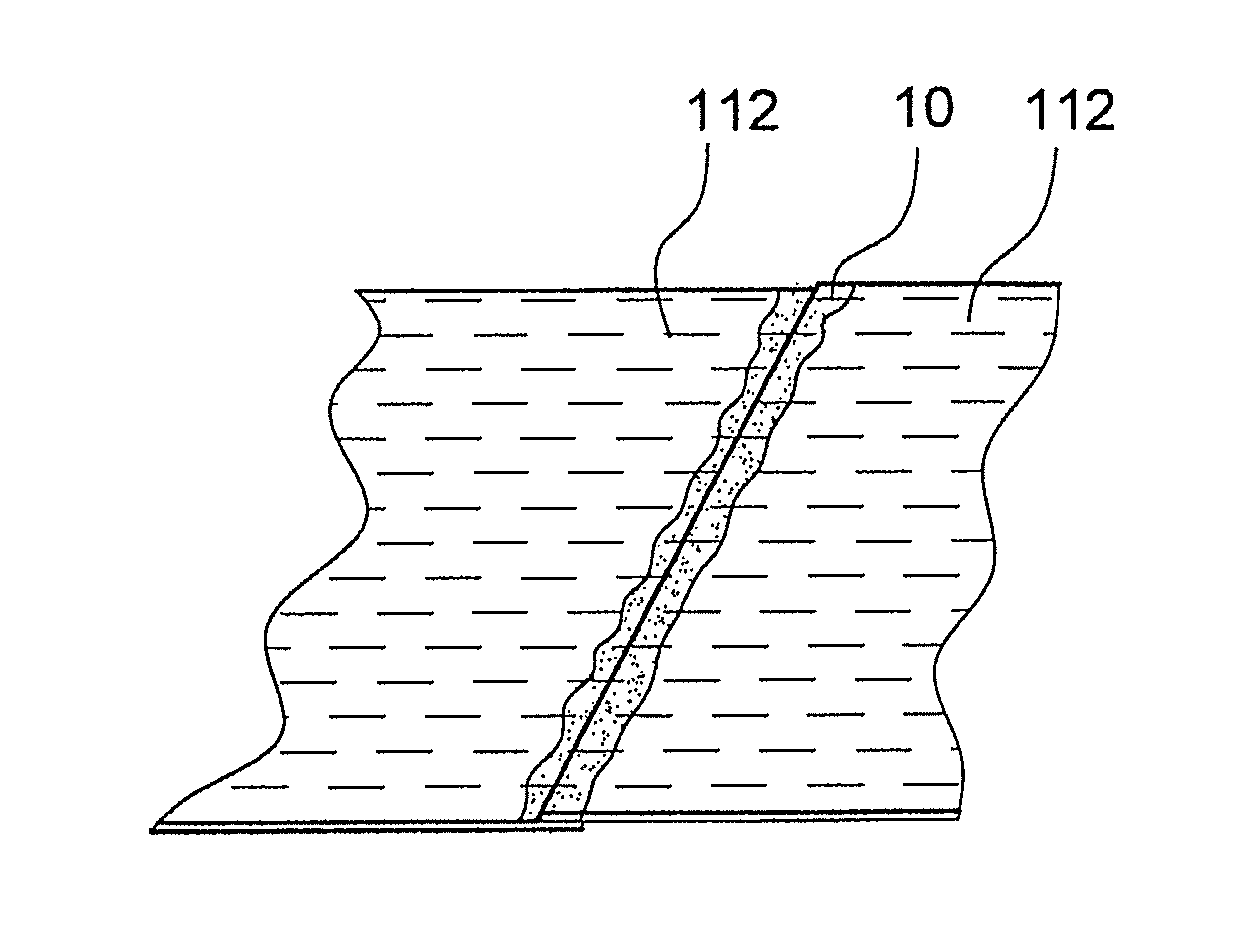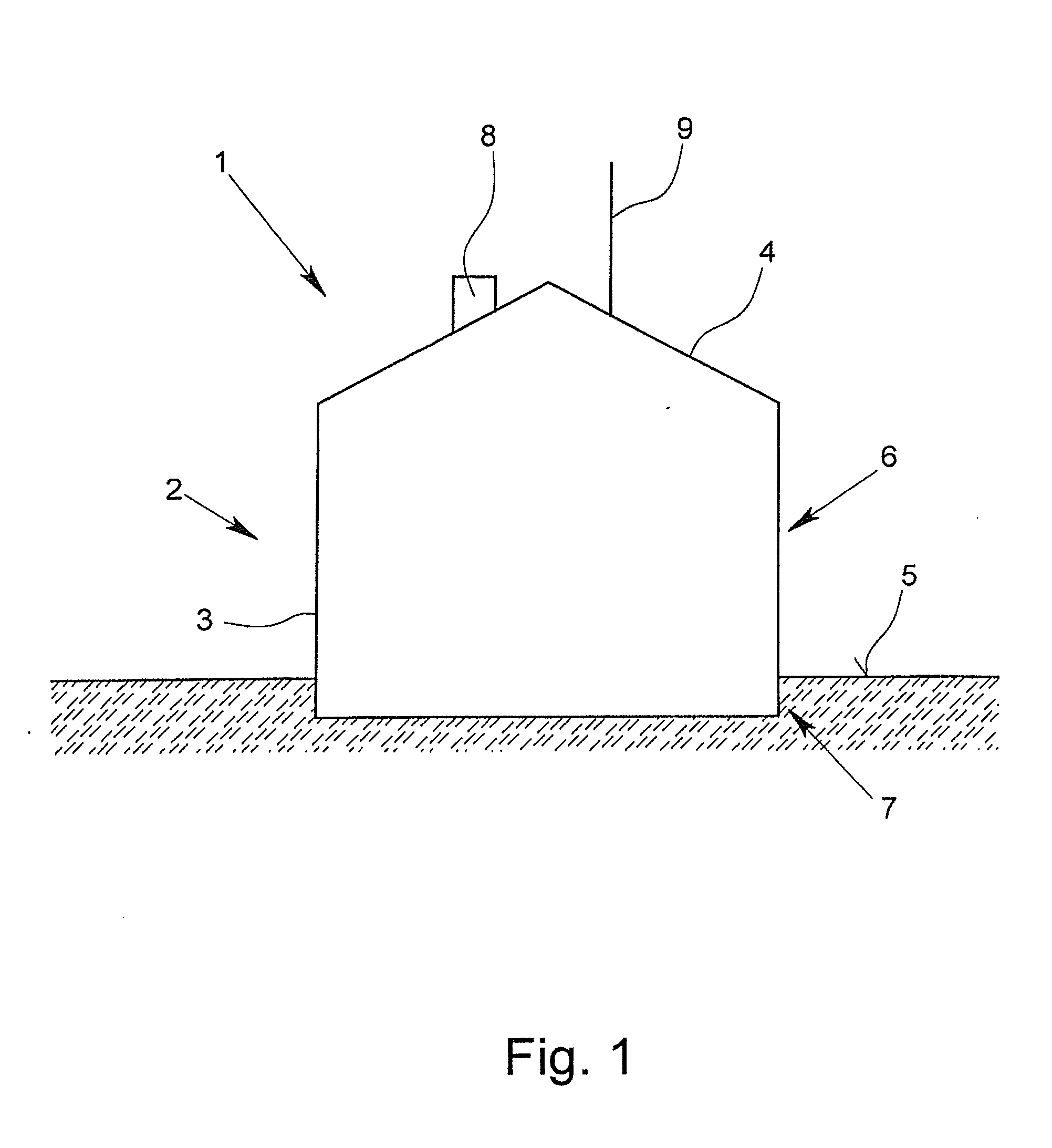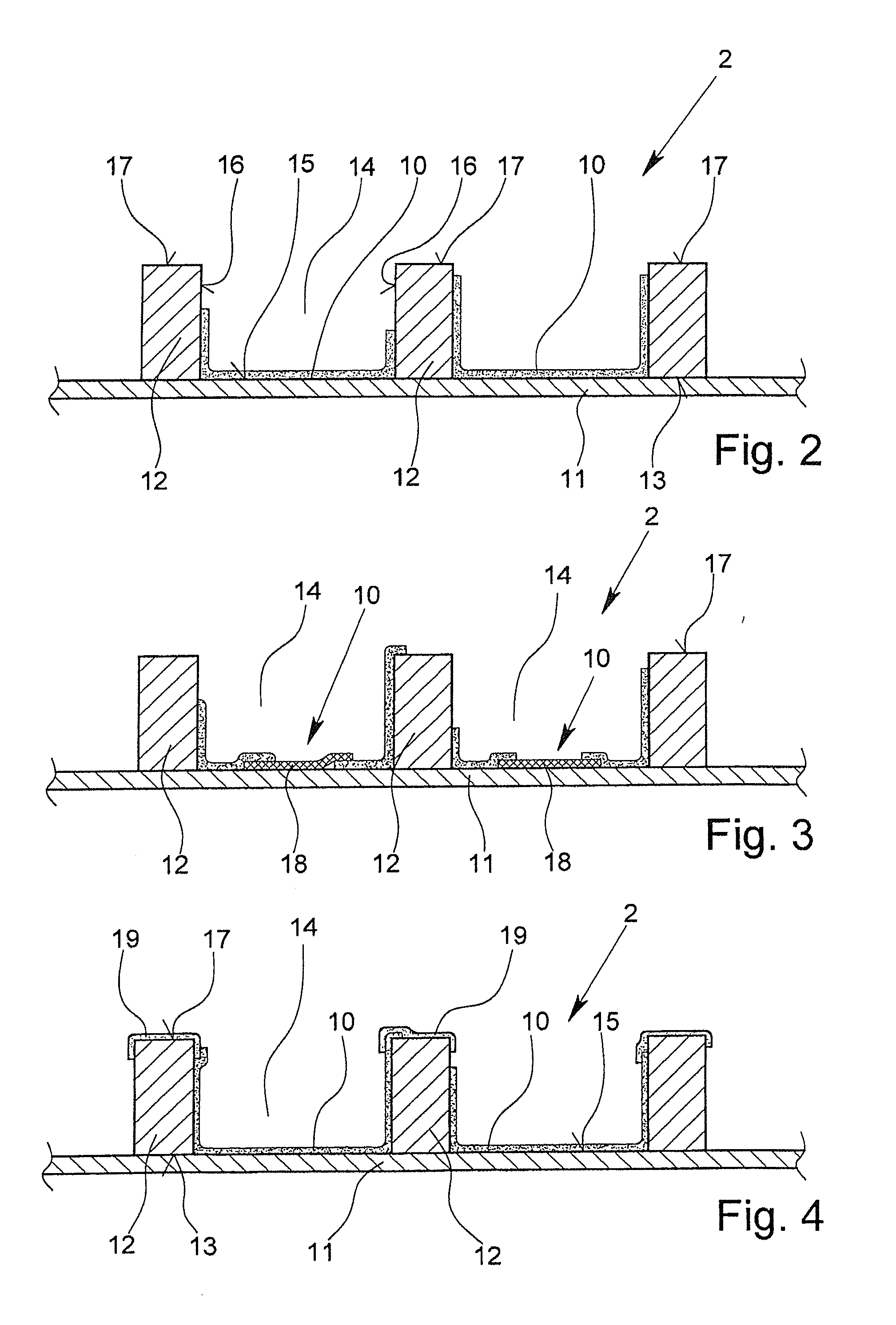Method for producing a functional layer of a building shell, and building shell and functional layer
a technology of building shells and functional layers, applied in the direction of superimposed coating processes, liquid/solution decomposition chemical coatings, manufacturing tools, etc., can solve the problems of unacceptably high levels of melt water or condensation water formation, unacceptably wet subjacent layers, and damage to functional layers by mechanical, chemical and physical stresses
- Summary
- Abstract
- Description
- Claims
- Application Information
AI Technical Summary
Benefits of technology
Problems solved by technology
Method used
Image
Examples
Embodiment Construction
[0183]In FIG. 1, a building 1 with a building shell 2, is depicted diagrammatically. The building shell 2 has a façade 3 and a roof 4. In this case, the façade 3 is divided into a non-ground-based façade area 6 that is located above the ground 5 and into a ground-based façade area 7 that is below the surface of the ground 5. In the area of the roof 4, a chimney 8 and an antenna 9 are present.
[0184]The building shell 2 is provided with a functional layer that is not shown in FIG. 1 and that can cover a full surface or a partial surface in the area of the façade 3 and / or the roof 4. In this case, it is understood that areas in which doors, windows or else the chimney 8 or the antenna 9 or else other details are located are excluded therefrom.
[0185]In FIGS. 2 to 4, a part of a roof system of the building 1 is now depicted. The roof system in this case is also part of the building shell 2, which—in the roof area—has a sheathing 11 on the inside of the building and a large number of raft...
PUM
| Property | Measurement | Unit |
|---|---|---|
| temperature | aaaaa | aaaaa |
| temperature | aaaaa | aaaaa |
| temperature | aaaaa | aaaaa |
Abstract
Description
Claims
Application Information
 Login to View More
Login to View More - R&D
- Intellectual Property
- Life Sciences
- Materials
- Tech Scout
- Unparalleled Data Quality
- Higher Quality Content
- 60% Fewer Hallucinations
Browse by: Latest US Patents, China's latest patents, Technical Efficacy Thesaurus, Application Domain, Technology Topic, Popular Technical Reports.
© 2025 PatSnap. All rights reserved.Legal|Privacy policy|Modern Slavery Act Transparency Statement|Sitemap|About US| Contact US: help@patsnap.com



